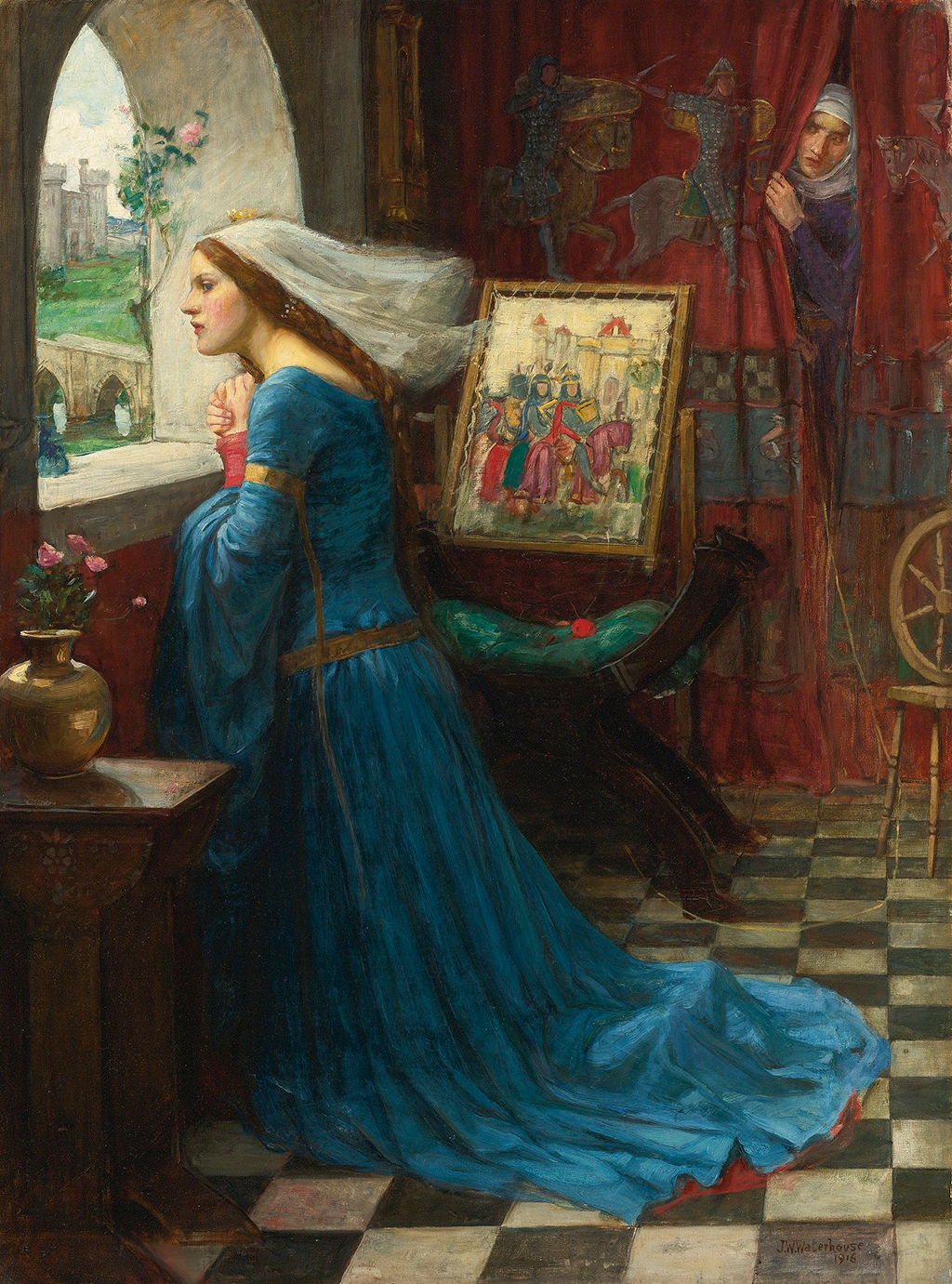Rosamund takes up an almost saintly pose, as artist Waterhouse attempts to portray her as the victim. She is dressed elegantly and kneels down besides some flowers. She is desperate for her lover to return to keep her protected. The figures in this piece are inspired by a true story, when Rosamund Clifford was killed by Queen Eleanor, who was angry at her passionate affair with her husband, King Henry II. She famously used a trail of silk thread to navigate her way around the one protection that Rosamund did have - a large maze which prevented others from visiting her, or so she thought. Some have celebrated the Queen's inventive mind, whilst others have sided very much with the King's mistress.
As with many of Waterhouse's domestic scenes, there is a lot of interesting detail to find right across this canvas. Besides the Queen who looks across from behind the curtains at the back of the composition, there is also a small tapestry or painting that sits just between them. The artist added great detail to the curtains themselves in order to give a further impression of wealthy surroundings as well as taking the opportunity to display his highly skilled techniques of painting drapery - something that many artists have found hard to master. Across the floor are chequered floor tiles, a feature which can be found in many other Waterhouse paintings, such as Mariana in the South. The use of women in perile is also a theme that he used regularly, as well as by the Pre-Raphaelites, with whom he was closely related.
Waterhouse put this painting together in circa 1916 and also produced a number of study paintings which went into considerable detail themselves. One of the finest study paintings was gifted by Sir William Goscombe John RA, who was a friend of the artist, to the National Museum of Wales in Cardiff. The more complete version arrived in 1917, the year of Waterhouse's death, and was sold into a series of private collections through auction in the late 20th century. The last few years of the artist's life were devoted to themes common to the Pre-Raphaelite Brotherhood, of which he remained on the fringes due to being a generation younger.


